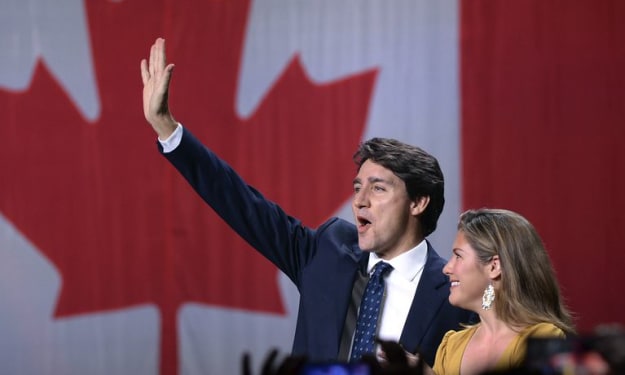Similar Elections: Iran 2009 Vs U.S. 2020
The U.S. is following the path of Iran’s 2009 election. The similarities are uncanny, the result may be different.

If you try to find two persons in the world who are apparently are opposite side of each other probably you couldn’t find any better example than President Trump and former president of Iran, Mahmoud Ahmadinejad.
One of them is self-proclaim billionaire, without real religious affiliate and not shy to show off his ambitions. The other man, is still trying to sell himself as a member of lower income class, defender of poor, highly engage to cultish interpretation of his religion and usually hid his ambitions behind the mask of a fighter for unprivileged.
But if you look at them closely and follow them through their path to rising to the power and their first term in office you would be surprised that how these two man are similar and if you are a U.S citizen on the verge of the election you may be frightened from this similarity and what it could have in store for the next few months
Ahmadinejad rise to power
In 2005, Ahmadinejad starts his campaign for the president of Iran as an outsider. He was an outsider compare to the first generation of revolution. But not as much as he wanted his supporters believed. He was governor during the presidency of Akbar H. Rafsanjani and when the ultra conservatives won the election of Tehran’s city council, he became the mayor of metropolitan of Tehran. He had used all the resources he had as a mayor to strength his presidential bid. He spent millions of dollars for religious celebrations, speed up the construction project in Tehran to show his efficiency and starts to portrait himself as an outsider and a man of people against establishment.
It was the end of the 2nd term of reformist president Khatami. The nuclear agreement with EU reached a dead-end due to lack of interest in the U.S. his two major reform bills block in the conservative parliament and whitlow and the hope that he brought to the public sphere eight years ago has faded.
And then the election had arrived.
Ahgmadinejad campaign portrayed him as an ultimate outsider and anti-establishments. While the reformists didn’t have a very strong candidate and were busy with the fractions inside their camp, Former President of Iran, Akbar, Hashemi Rafsanjani, entered the race. He was the symbol of establishment; his campaign motto was “He is coming and he knows everyone.”
This was the golden opportunity for Ahmadinejad to create a bipolar election. His strategy payed off. In the run off of the election he won the presidency. Like Trump, A man who never took him seriously beat a resourceful, powerful and experienced candidate that most of the people – those who voted for him or didn’t vote for him – believed his presidency would be inevitable.
Many people didn’t vote to Mr. Rafsanjani because they didn’t like him either. Some believed in the Ahmadinejad’s advertisement about being anti-establishment and a new comer. And a considerable number of people decided that they wont cast their vote. Because they didn’t like any of candidate and they couldn’t believe that Ahmadinejad had a chance to won the election.
This category played an essential role in Ahmadinejad’s win.
Similarities in governing
The similarity between two presidents is not end at the election. Like president Trump, president Ahmadinejad, insulted press, gathered a group of non-competent people around himself, dismantled professional and expert based institutions, insulted international partners and organizations, spreading disinformation and lie and didn’t miss the slightest opportunity for show off.
And his lack of understanding of international relationship caused multiple UN security council resolution and sanction against Iran.
He has some advantage in economic field. The price of oil reached to the highest amount during his presidency. But his administration managed to despite this increase in income, at the same time reduce the economic growth and increase inflation in the country.
Four years later many people made their mind about his government.
When the 2009 presidential election came, once again Ahmadinejad tried to repeat his formula. But his opponent was not like Rafsanjani. This time the last prime minister of Iran, Mir Hossein Mousavi backed from his retirement and being an artist to lead the coalition against the incumbent president.
Mousavi had the support of President Khatami. On the hearth of his campaign was the idea of “bringing back the respect of people and values of Iranian people”. In other word he was talking about the battle for the soul of a nation.
The debate between two man was historical. It was like the first presidential debate between joe Biden and Trump but on steroid.
Finally, the election day has arrived. And it has all the element of a fraud election. The Government rapidly announced that Ahmadinejad won the election with 63 percent of votes. Many people didn’t believe that. Protests started in streets. Police and militia deployed to crack down the protestors. The blood had shed. And the largest unrest in Iranian post revolution hast started under the name of the Green Movement.
One year later the Mousavi and other leaders of the movement put on the house arrest – and they are still in the house arrest after more than 10 years.
What could go right?
This was the situation in Iran. You can find the similarity between President Ahmadinejad and Trump by reading these lines. Right now, many political observers voice their concerns about the probability that Trump won’t accept the result and don’t leave the White House. But does it mean that this similarity could continue and end up at vast protests, clash between police and protestors and even arresting vice president Biden and Senator Harris if they don’t go along with Trump?
There are many factors exist in the U.S. system that might prevent such result. Free press is one of them. But the most important difference which could be play in favor of the U.S. is that America doesn’t have Supreme Leader.
If it wasn’t for the alterative position of Supreme Leader in Iran who has control on many aspects of Iranian society including the state media and revolutionary guard, the end of the Green Movement could be very different.
The U.S. constitution doesn’t have any position like this and because of that it is most likely that final result of these two elections despite all the similarity would be the same.
But this is not the end of the story. If President Trump challenge the election results, he would present his case to the supreme court. And this body could decide the outcome of the election. Even if there wouldn’t be enough evidences for his case, the court with three appointees of Mr. Trump and majority of conservative in it could vote in favor of him and if this happened, what option Biden would have?
In such case supreme court could play the role of limited supreme leader of Iran during 2009 election.
We don’t know what will happen but maybe it is wise for the U.S. politician to look to similar events in other part of the world and those events maybe teach a thing or two about the dynamic of their politic.
About the Creator
Pouria Nazemi
Freelance science journalist based in Montreal, Canada






Comments
There are no comments for this story
Be the first to respond and start the conversation.